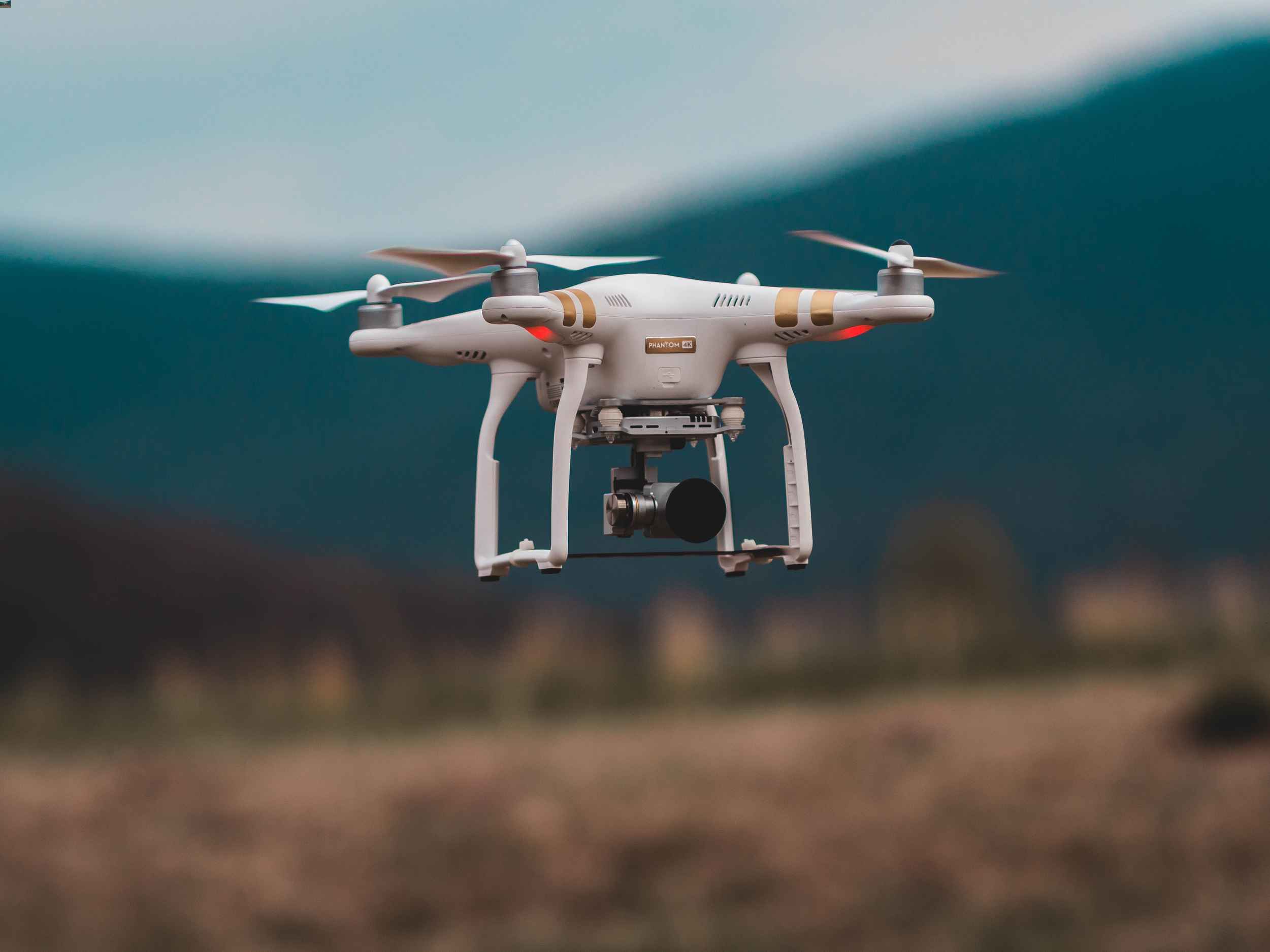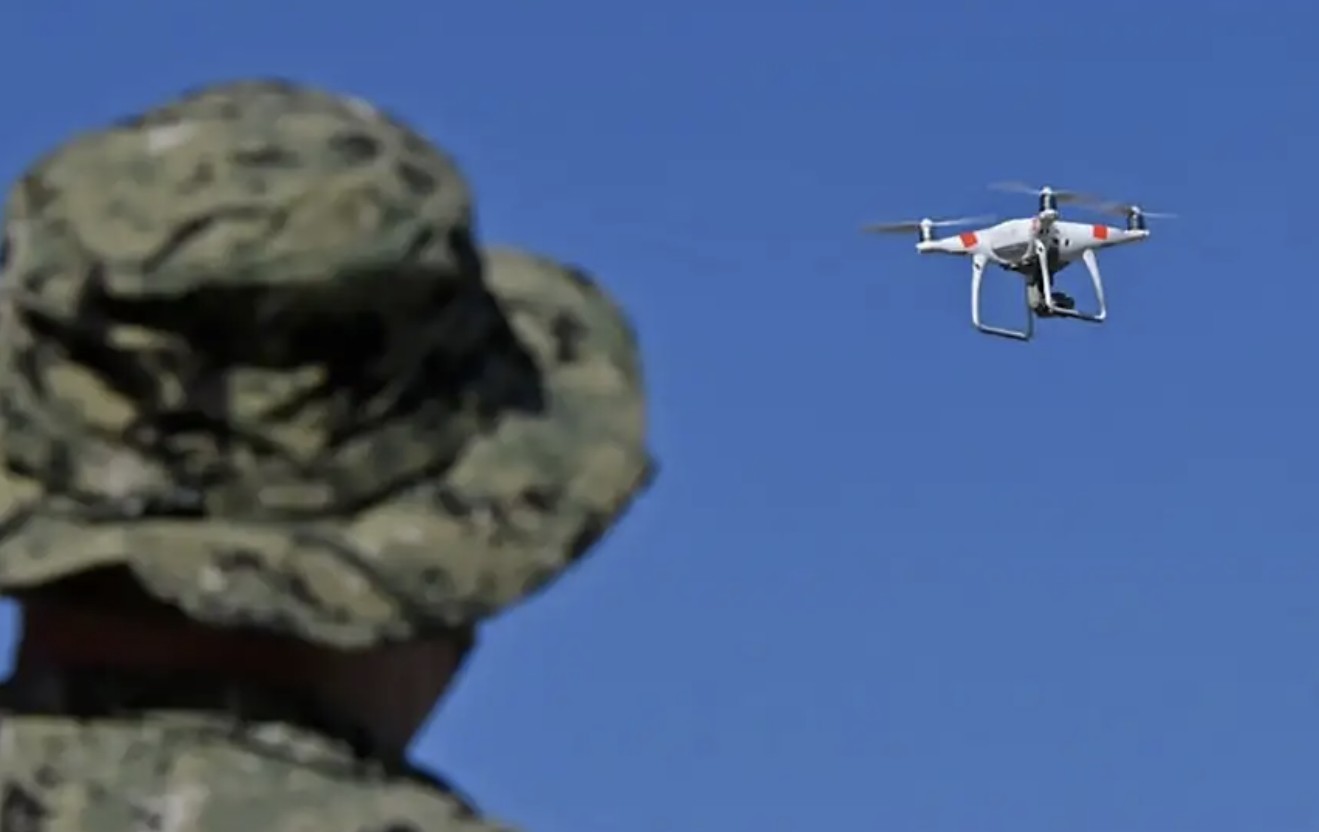Giant drones represent a burgeoning field in unmanned aerial vehicle (UAV) technology, pushing the boundaries of size, payload capacity, and operational range. These large-scale systems offer transformative potential across diverse sectors, from logistics and infrastructure inspection to agriculture and search and rescue. This exploration delves into the technological intricacies, operational considerations, and societal implications of giant drone deployment, providing a comprehensive overview of this rapidly evolving domain.
This analysis examines the technological advancements driving giant drone development, including propulsion systems, materials science, and control algorithms. We will explore the various applications of these platforms, alongside a critical assessment of regulatory frameworks, safety protocols, and potential environmental impacts. Furthermore, the ethical considerations surrounding data privacy, surveillance, and potential biases associated with widespread adoption will be addressed.
Finally, we will project future trends and the anticipated societal impact of giant drone integration into various aspects of modern life.
Technological Aspects of Giant Drones

Giant drones, also known as large unmanned aerial systems (UAS), represent a significant advancement in aviation technology. Their size allows for heavier payloads and longer flight times compared to smaller drones, opening up possibilities for various applications, including cargo delivery, infrastructure inspection, and precision agriculture. However, the scale of these systems presents unique technological challenges that require innovative solutions.
Propulsion Systems in Giant Drones
The propulsion systems employed in giant drones are crucial to their performance and efficiency. Several options exist, each with its own strengths and limitations. Common choices include modified turboprop engines, adapted piston engines, and even electric propulsion systems for smaller, less demanding applications. Turboprop engines offer high power-to-weight ratios, making them suitable for large, heavy-lift drones. However, they are generally less efficient than electric motors at lower speeds and suffer from higher maintenance requirements and noise pollution.
Piston engines, while offering a balance between power and efficiency, are often heavier and less reliable than turboprops. Electric propulsion systems, while environmentally friendly and quiet, are currently limited by battery technology, resulting in shorter flight times and reduced payload capacity compared to combustion-based systems. The choice of propulsion system is dictated by factors such as payload capacity, flight duration, mission requirements, and environmental considerations.
Materials Used in Giant Drone Frames
The structural integrity of a giant drone is paramount for safety and operational reliability. The choice of materials significantly impacts weight, strength, durability, and cost.
| Material | Strength | Weakness | Applications |
|---|---|---|---|
| Carbon Fiber Reinforced Polymer (CFRP) | High tensile strength, high stiffness-to-weight ratio, fatigue resistance | High cost, susceptible to damage from impact, complex manufacturing process | Airframes, structural components requiring high strength and low weight |
| Aluminum Alloys | Good strength-to-weight ratio, readily available, relatively low cost | Lower stiffness compared to CFRP, susceptible to corrosion | Less critical structural components, landing gear |
| Titanium Alloys | High strength, high corrosion resistance, high temperature tolerance | Extremely high cost, difficult to machine | High-stress components in extreme environments |
| Steel | High strength, readily available, relatively low cost | High weight, susceptible to corrosion | Specific components where high strength and low cost are prioritized over weight |
Technological Challenges in Giant Drone Development and Deployment
Several key technological challenges hinder the widespread adoption of giant drones. Extended battery life remains a critical limitation for electric-powered systems, restricting flight duration and operational range. Robust and reliable control systems capable of managing the complex aerodynamics and stability of large drones are essential, particularly in challenging weather conditions. Ensuring the safety of these large, heavy vehicles during operation and in the event of malfunctions requires sophisticated safety features, including redundant systems, autonomous emergency landing capabilities, and robust collision avoidance technologies.
Furthermore, regulatory frameworks and airspace management protocols need to adapt to accommodate the unique operational requirements of giant drones. Addressing these challenges requires continuous research and development across various disciplines, including materials science, propulsion technology, control systems engineering, and regulatory policy.
The development of giant drones presents significant logistical challenges, particularly concerning real-time monitoring of their operational areas. Effective surveillance necessitates advanced sensor integration, and one example of such technology is the high-resolution imagery provided by systems like those found in ottawa traffic camera networks. Scaling this level of visual data acquisition to the scope of a giant drone’s operational radius remains a key research area.
Environmental Impact

The operation of giant drones presents a range of potential environmental concerns, demanding careful consideration and proactive mitigation strategies. These impacts extend across various environmental domains, from noise and air quality to the disruption of wildlife habitats and ecosystems. A comprehensive assessment is crucial to ensure responsible development and deployment of this emerging technology.The scale and operational characteristics of giant drones necessitate a detailed examination of their environmental footprint.
Unlike smaller drones, their larger size, increased payload capacity, and potentially longer flight durations contribute to amplified environmental effects. These effects are not merely additive; the synergistic interactions between different impacts need to be considered for a complete understanding.
Noise Pollution
Giant drone operations generate significant noise pollution, particularly during takeoff, landing, and high-speed flight. The intensity and frequency of this noise can negatively impact human health and well-being, causing stress, sleep disturbance, and hearing loss in nearby communities. The acoustic signature of a large drone’s propellers and engines differs significantly from smaller drones, potentially resulting in a more disruptive and pervasive sound profile.
Mitigation strategies could involve the development of quieter propulsion systems, optimized flight paths to minimize overflight of populated areas, and the implementation of noise barriers. For example, research into advanced propeller designs, the use of electric motors, and the incorporation of noise-dampening materials are promising avenues for reducing noise pollution.
Air Quality Impacts
Giant drones, depending on their propulsion systems, can contribute to air pollution. Combustion engines used in some larger drones release greenhouse gases (GHGs) such as carbon dioxide (CO2), methane (CH4), and nitrous oxide (N2O), contributing to climate change. Furthermore, the combustion process can produce particulate matter (PM) and other pollutants, impacting air quality and human respiratory health. Electric-powered giant drones offer a cleaner alternative, reducing GHG emissions and improving air quality.
However, the manufacturing and disposal of batteries associated with electric drones need careful consideration, given their environmental implications. For instance, the lifecycle assessment of battery production and recycling should be part of the overall environmental impact analysis. A comparison with traditional transportation methods such as trucks for cargo delivery should consider the total energy consumption and GHG emissions per unit of cargo transported.
The development of giant drones presents unique operational challenges, exceeding the capabilities of smaller unmanned aerial vehicles. Before operating such large-scale systems, acquiring the necessary certifications is crucial; this often necessitates obtaining a drone license, such as those detailed on the website for drone licence canada. Proper licensing ensures safe and legal operation of giant drones, mitigating potential risks associated with their size and power.
Wildlife Disruption
The noise and presence of giant drones can significantly disrupt wildlife habitats and behaviors. Birds and other animals may experience stress, habitat displacement, and altered migration patterns. Collisions with drones pose a risk to avian populations, particularly during critical breeding or migratory periods. Mitigation strategies involve careful flight planning to avoid sensitive wildlife areas, adherence to strict operational altitude restrictions, and the implementation of wildlife monitoring programs to assess potential impacts.
The development of drone detection and avoidance systems for birds and other animals is also crucial for minimizing the risk of collisions. Comparative studies analyzing the impact of giant drones on wildlife populations versus the effects of traditional transportation methods (e.g., shipping, trucking) are needed to assess the relative environmental impact. This requires detailed ecological surveys and long-term monitoring to establish baseline data and track any changes in wildlife populations and behavior.
Ethical Considerations

The deployment of giant drones presents a complex array of ethical challenges, particularly concerning surveillance, data collection, and potential societal impacts. The scale and capabilities of these systems necessitate careful consideration of privacy rights, potential biases in their application, and the overall implications for democratic processes and social equity. A robust ethical framework is crucial to mitigate potential harms and ensure responsible innovation.
Giant drones, due to their size and technological capabilities, possess significant surveillance potential. Their ability to cover large areas and potentially integrate advanced sensors (such as high-resolution cameras, thermal imaging, and even sophisticated acoustic sensors) raises serious concerns about mass surveillance and the erosion of privacy. Data collected by these drones could be used for various purposes, ranging from legitimate security operations to less justifiable applications, potentially including targeted harassment or discriminatory profiling.
Surveillance and Data Collection Implications
The ethical implications of using giant drones for surveillance and data collection are multifaceted. The potential for intrusive surveillance raises concerns about the balance between national security or public safety and individual privacy rights. Data security and the potential for misuse or unauthorized access are also significant issues. Furthermore, the sheer volume of data collected by these systems necessitates robust data management and protection protocols to prevent breaches and ensure compliance with relevant regulations.
Existing legal frameworks regarding surveillance may need to be reassessed and updated to address the unique challenges posed by giant drones. For example, the use of facial recognition technology in conjunction with drone surveillance raises particular concerns about potential misidentification and discriminatory outcomes.
Potential Biases and Societal Impacts, Giant drone
The deployment of giant drones carries the risk of exacerbating existing societal biases. Algorithms used to process data collected by drones may reflect and amplify pre-existing prejudices, leading to discriminatory outcomes. For example, if a drone’s surveillance system is trained on a dataset that over-represents certain demographics, the system may be more likely to target individuals from those groups, perpetuating cycles of inequality.
Moreover, the deployment of giant drones could disproportionately affect marginalized communities, exacerbating existing social inequalities. The lack of transparency in algorithmic decision-making processes further complicates these issues, making it difficult to identify and address biases effectively. This necessitates the development of transparent and accountable systems for data processing and decision-making to ensure fairness and equity. Real-world examples of biased algorithmic systems in areas such as criminal justice and loan applications highlight the need for careful consideration of these issues in the context of giant drone technology.
Ethical Guidelines for Giant Drone Development and Use
Establishing clear ethical guidelines is essential for the responsible development and deployment of giant drone technology. These guidelines should address issues of data privacy, algorithmic transparency, accountability for misuse, and the potential for discriminatory outcomes. They should also incorporate mechanisms for public oversight and input to ensure that the development and use of giant drones align with societal values and democratic principles.
A multi-stakeholder approach, involving policymakers, researchers, technology developers, and civil society organizations, is crucial to creating a comprehensive and effective ethical framework. Such a framework should include:
A clear definition of permissible uses of giant drones, specifying the types of data that can be collected and how it can be used. This would help to prevent the misuse of the technology for purposes such as unwarranted surveillance or discriminatory profiling.
Robust data protection measures to ensure the security and privacy of data collected by giant drones. This includes encryption, access controls, and secure data storage.
Mechanisms for public oversight and accountability, ensuring that the use of giant drones is transparent and subject to independent review. This could include independent audits of data collection practices and algorithmic fairness.
Procedures for addressing complaints and redress grievances related to the use of giant drones. This could involve independent review boards or ombudsmen.
Array
Giant drone technology is poised for significant advancements in the coming years, driven by innovations across multiple disciplines. These advancements will expand their operational capabilities, broaden their applications, and ultimately reshape various industries. The convergence of improved propulsion systems, enhanced autonomy, and increasingly sophisticated artificial intelligence will be key drivers of this evolution.
Advancements in Propulsion, Autonomy, and Artificial Intelligence
The future of giant drone technology hinges on significant improvements in three key areas: propulsion, autonomy, and artificial intelligence. In propulsion, the development of more efficient and powerful electric motors, coupled with advancements in battery technology, will enable longer flight times and heavier payloads. Hybrid-electric propulsion systems, combining the benefits of both electric and internal combustion engines, are also likely to gain traction, offering a balance between power and endurance.
Simultaneously, advancements in autonomous flight control systems, utilizing sophisticated sensor fusion and machine learning algorithms, will lead to increased reliability and safety. This includes the development of robust obstacle avoidance systems and improved navigation capabilities, even in challenging environmental conditions. The integration of artificial intelligence will further enhance autonomy, allowing drones to perform complex tasks with minimal human intervention.
This includes tasks such as automated cargo loading and unloading, autonomous route planning, and real-time decision-making based on environmental factors. For example, Amazon’s Prime Air delivery drone program is actively researching and developing advanced autonomous navigation systems to handle varying weather conditions and complex urban airspace.
Future Market Predictions and Industrial Impact
The market for giant drones is expected to experience substantial growth in the coming decade. Driven by increasing demand across various sectors, including logistics, infrastructure inspection, and emergency response, the market is projected to reach billions of dollars in value. In logistics, giant drones will play a crucial role in delivering goods to remote or inaccessible areas, potentially revolutionizing supply chains.
Infrastructure inspection will benefit from the ability of giant drones to conduct thorough and efficient inspections of bridges, power lines, and pipelines, reducing costs and improving safety. Emergency response operations will leverage the speed and versatility of giant drones to deliver vital supplies and aid to disaster-stricken areas. For instance, the use of giant drones for rapid delivery of medical supplies in remote areas after a natural disaster is a scenario gaining traction and practical application.
The increasing affordability and accessibility of giant drone technology will further fuel market expansion, attracting new players and fostering innovation.
Giant Drone Integration into Smart Cities
The integration of giant drones into smart city environments presents both opportunities and challenges. Giant drones can contribute significantly to urban infrastructure management by providing real-time data acquisition for traffic monitoring, environmental monitoring, and public safety. For example, drones equipped with advanced sensors can monitor air quality, identify traffic congestion, and assist in emergency response situations. Furthermore, they can be utilized for delivery of goods and services within urban areas, potentially reducing traffic congestion and improving efficiency.
However, the integration of giant drones requires careful planning and consideration of safety regulations, airspace management, and public acceptance. The development of robust air traffic management systems and the establishment of clear safety guidelines are essential for the safe and effective integration of giant drones into urban environments. Cities like Singapore are already exploring the use of drones for various applications, including delivery services and infrastructure inspections, highlighting the potential for seamless integration.
The integration of giant drones into various sectors presents both significant opportunities and substantial challenges. While offering transformative potential for efficiency and innovation across logistics, infrastructure, and emergency response, careful consideration of regulatory frameworks, safety protocols, and ethical implications is crucial. Addressing concerns related to environmental impact, data privacy, and potential biases ensures the responsible and beneficial deployment of this powerful technology.
Continued research and development, coupled with robust regulatory oversight, will be instrumental in realizing the full potential of giant drones while mitigating associated risks.
Frequently Asked Questions: Giant Drone
What is the typical flight time of a giant drone?
Flight time varies significantly depending on payload, wind conditions, and battery technology. Current models range from a few hours to potentially over a day for some designs.
What are the typical costs associated with owning and operating a giant drone?
Costs vary greatly depending on size, capabilities, and required maintenance. Initial purchase price can range from hundreds of thousands to millions of dollars, with ongoing operational costs including maintenance, insurance, and pilot training.
How are giant drones controlled and monitored?
Giant drones are typically controlled remotely via sophisticated ground control stations utilizing various communication technologies. Real-time monitoring systems track flight parameters, location, and system health.
What safety features are incorporated into giant drone designs?
Safety features vary but commonly include redundant systems, automated emergency landing capabilities, obstacle avoidance technologies, and GPS-based navigation.